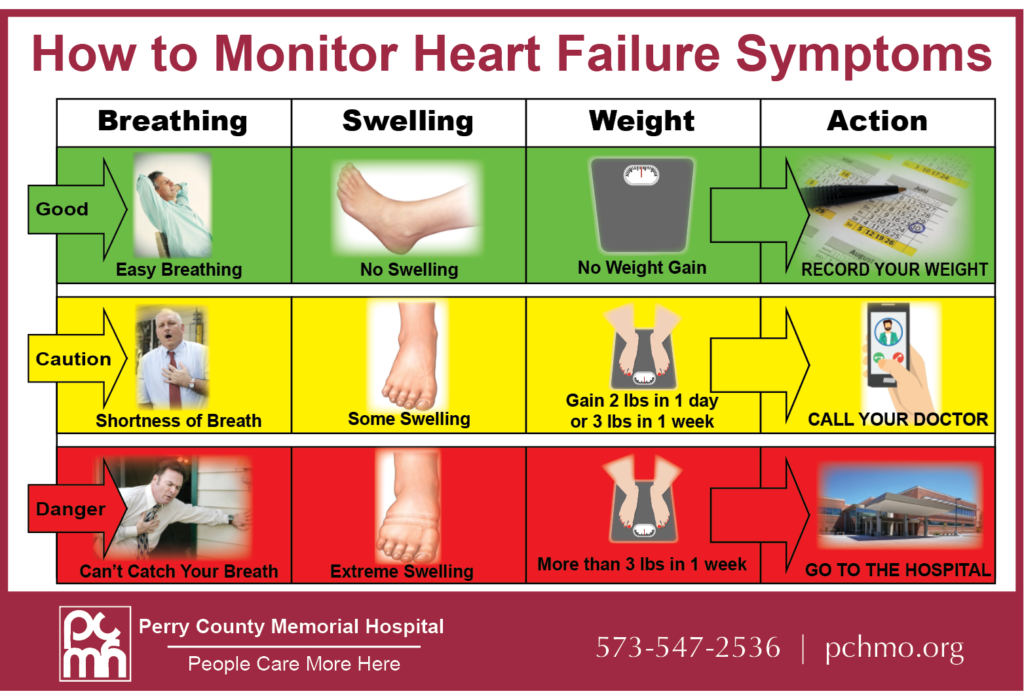
Perry Community Memorial Hospital in Perryville, Missouri, implemented a tool with congestive heart failure (CHF) patients that literally stuck (to their refrigerators) to help reduce readmission rates. A stoplight magnet detailing “How to Monitor Heart Failure Symptoms” was provided to high-risk patients upon discharge that described symptoms and actions they should take for varying conditions.
For CHF patients, including the magnet along with teach-back education, helped drop their in-house baseline readmission rate from 15% to 8%.
“We had very bad readmissions in 2019 and 2020 but now we are consistently under 10%,” said Susan Randolph, RN BSN, Quality & Utilization Management Director at Perry Community Memorial Hospital.
The magnet helps patients monitor their current conditions for breathing, swelling and weight. The stoplight design lets patients see that if they are in the green, they can continue to simply record their weight. If there have yellow conditions like shortness of breath, some swelling and gaining two pounds in a day or three pounds in one week, they should call their doctor. The red, or danger level, is when patients cannot catch their breath, have extreme swelling and gain more than three pounds in one week. That is when it is time to go to the hospital.
The magnet is simple in its design and has pictures with very brief descriptions to avoid confusion about health conditions and what a patient should do.
“We looked for something to use that had pictures and was in layman’s terms,” said Sara Cissell, RN BSN, Medical Surgical Nurse Manger at Perry Community Memorial Hospital. “Before we went live with the magnet, we created a prototype and got feedback from our rehab patients.”
Getting buy-in from physicians, nurses and staff was easy because the tool helps reduce their heavy workload caused from the same patients coming back to the hospital time and time again. Staff were trained on which patients would receive the magnet based on a LACE score determining who is high risk for readmission. Along with the magnet and teach-back method that helps patients understand their role in staying healthy, the hospital is also beginning to call high-risk patients within 48 hours of discharge to check on their condition.
The complete package is working, and the hospital readmission rates are remaining low.
“It changed our practice, and it changed the way we work with our patients and their families and caregivers,” Cissell said.
Click HERE to download the file of the magnet.
